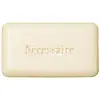What's inside
What's inside
 Key Ingredients
Key Ingredients

 Benefits
Benefits

 Concerns
Concerns

 Ingredients Side-by-side
Ingredients Side-by-side

Hydrogenated Vegetable Oil
EmollientSodium Cocoyl Isethionate
CleansingWater
Skin ConditioningPolyglyceryl-4 Laurate
EmulsifyingGlycerin
HumectantCellulose Acetate
Lavandula Hybrida Oil
EmollientSqualane
EmollientLinalool
PerfumingCI 77891
Cosmetic ColorantSodium Chloride
MaskingJojoba Esters
EmollientNiacinamide
SmoothingUrea
BufferingLactic Acid
BufferingKaolin
AbrasiveLimonene
PerfumingCaprylic/Capric Triglyceride
MaskingGeraniol
PerfumingTalc
AbrasiveRetinol
Skin ConditioningBHT
AntioxidantCitronellol
PerfumingCI 77007
Cosmetic ColorantCI 77742
Cosmetic ColorantCI 73360
Cosmetic ColorantCI 77510
Cosmetic ColorantHydrogenated Vegetable Oil, Sodium Cocoyl Isethionate, Water, Polyglyceryl-4 Laurate, Glycerin, Cellulose Acetate, Lavandula Hybrida Oil, Squalane, Linalool, CI 77891, Sodium Chloride, Jojoba Esters, Niacinamide, Urea, Lactic Acid, Kaolin, Limonene, Caprylic/Capric Triglyceride, Geraniol, Talc, Retinol, BHT, Citronellol, CI 77007, CI 77742, CI 73360, CI 77510
Sodium Palmate
CleansingSodium Palm Kernelate
CleansingWater
Skin ConditioningGlycerin
HumectantCellulose Acetate
Sclerocarya Birrea Seed Oil
HumectantNiacinamide
SmoothingCaryodendron Orinocense Seed Oil
EmollientLimnanthes Alba Seed Oil
Skin ConditioningCeramide AP
Skin ConditioningCeramide Ag
HumectantCeramide EOP
Skin ConditioningCeramide Ng
Skin ConditioningCeramide NP
Skin ConditioningSodium Gluconate
Skin ConditioningLinoleic Acid
CleansingLinolenic Acid
CleansingCholesterol
EmollientCetearyl Alcohol
EmollientSodium Chloride
MaskingTocopherol
AntioxidantDipropylene Glycol
HumectantHydrogenated Lecithin
EmulsifyingGlyceryl Stearate
EmollientSodium Palmate, Sodium Palm Kernelate, Water, Glycerin, Cellulose Acetate, Sclerocarya Birrea Seed Oil, Niacinamide, Caryodendron Orinocense Seed Oil, Limnanthes Alba Seed Oil, Ceramide AP, Ceramide Ag, Ceramide EOP, Ceramide Ng, Ceramide NP, Sodium Gluconate, Linoleic Acid, Linolenic Acid, Cholesterol, Cetearyl Alcohol, Sodium Chloride, Tocopherol, Dipropylene Glycol, Hydrogenated Lecithin, Glyceryl Stearate
Alternatives
Ingredients Explained
These ingredients are found in both products.
Ingredients higher up in an ingredient list are typically present in a larger amount.
We don't have a description for Cellulose Acetate yet.
Glycerin is already naturally found in your skin. It helps moisturize and protect your skin.
A study from 2016 found glycerin to be more effective as a humectant than AHAs and hyaluronic acid.
As a humectant, it helps the skin stay hydrated by pulling moisture to your skin. The low molecular weight of glycerin allows it to pull moisture into the deeper layers of your skin.
Hydrated skin improves your skin barrier; Your skin barrier helps protect against irritants and bacteria.
Glycerin has also been found to have antimicrobial and antiviral properties. Due to these properties, glycerin is often used in wound and burn treatments.
In cosmetics, glycerin is usually derived from plants such as soybean or palm. However, it can also be sourced from animals, such as tallow or animal fat.
This ingredient is organic, colorless, odorless, and non-toxic.
Glycerin is the name for this ingredient in American English. British English uses Glycerol/Glycerine.
Learn more about GlycerinNiacinamide is a multitasking form of vitamin B3 that strengthens the skin barrier, reduces pores and dark spots, regulates oil, and improves signs of aging.
And the best part? It's gentle and well-tolerated by most skin types, including sensitive and reactive skin.
You might have heard of "niacin flush", or the reddening of skin that causes itchiness. Niacinamide has not been found to cause this.
In very rare cases, some individuals may not be able to tolerate niacinamide at all or experience an allergic reaction to it.
If you are experiencing flaking, irritation, and dryness with this ingredient, be sure to double check all your products as this ingredient can be found in all categories of skincare.
When incorporating niacinamide into your routine, look out for concentration amounts. Typically, 5% niacinamide provides benefits such as fading dark spots. However, if you have sensitive skin, it is better to begin with a smaller concentration.
When you apply niacinamide to your skin, your body converts it into nicotinamide adenine dinucleotide (NAD). NAD is an essential coenzyme that is already found in your cells as "fuel" and powers countless biological processes.
In your skin, NAD helps repair cell damage, produce new healthy cells, support collagen production, strengthen the skin barrier, and fight environmental stressors (like UV and pollution).
Our natural NAD levels start to decline with age, leading to slower skin repair, visible aging, and a weaker skin barrier. By providing your skin niacinamide, you're recharging your skin's NAD levels. This leads to stronger, healthier, and younger looking skin.
Another name for vitamin B3 is nicotinamide. This vitamin is water-soluble and our bodies don't store it. We obtain Vitamin B3 from either food or skincare. Meat, fish, wheat, yeast, and leafy greens contain vitamin B3.
The type of niacinamide used in skincare is synthetically created.
Learn more about NiacinamideChances are, you eat sodium chloride every day. Sodium Chloride is also known as table salt.
This ingredient has many purposes in skincare: thickener, emulsifier, and exfoliator.
You'll most likely find this ingredient in cleansers where it is used to create a gel-like texture. As an emulsifier, it also prevents ingredients from separating.
There is much debate on whether this ingredient is comedogenic. The short answer - comedogenic ratings don't tell the whole story. Learn more about comegodenic ratings here.
The concensus about this ingredient causing acne seems to be divided. Research is needed to understand if this ingredient does cause acne.
Scrubs may use salt as the primary exfoliating ingredient.
Learn more about Sodium ChlorideWater. It's the most common cosmetic ingredient of all. You'll usually see it at the top of ingredient lists, meaning that it makes up the largest part of the product.
So why is it so popular? Water most often acts as a solvent - this means that it helps dissolve other ingredients into the formulation.
You'll also recognize water as that liquid we all need to stay alive. If you see this, drink a glass of water. Stay hydrated!
Learn more about Water